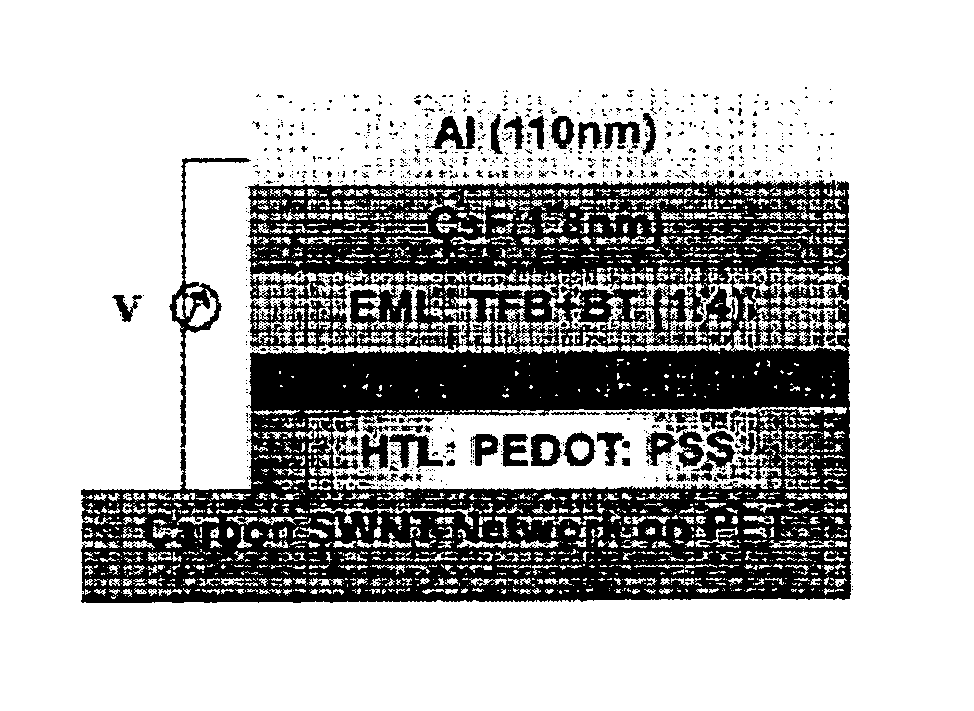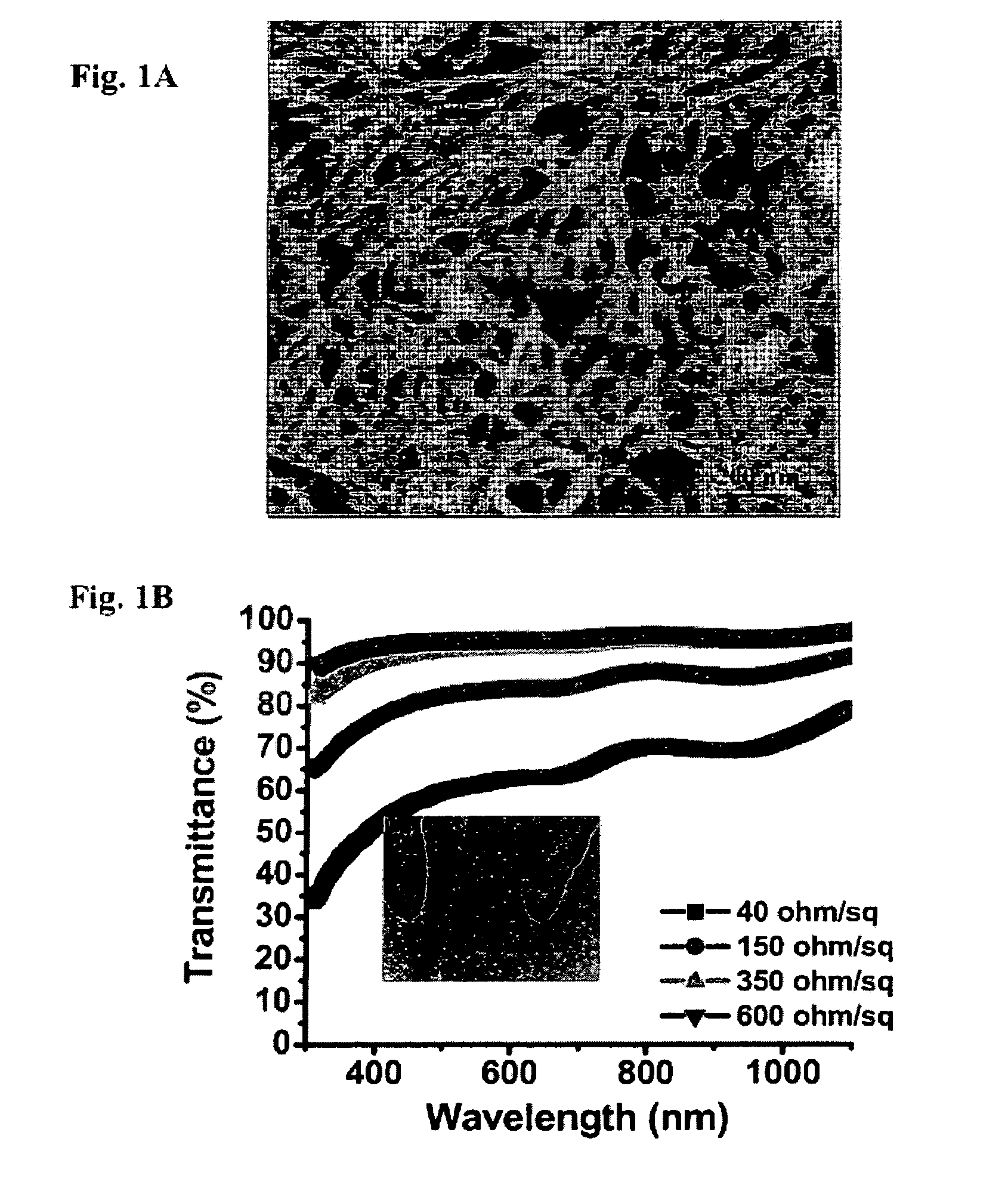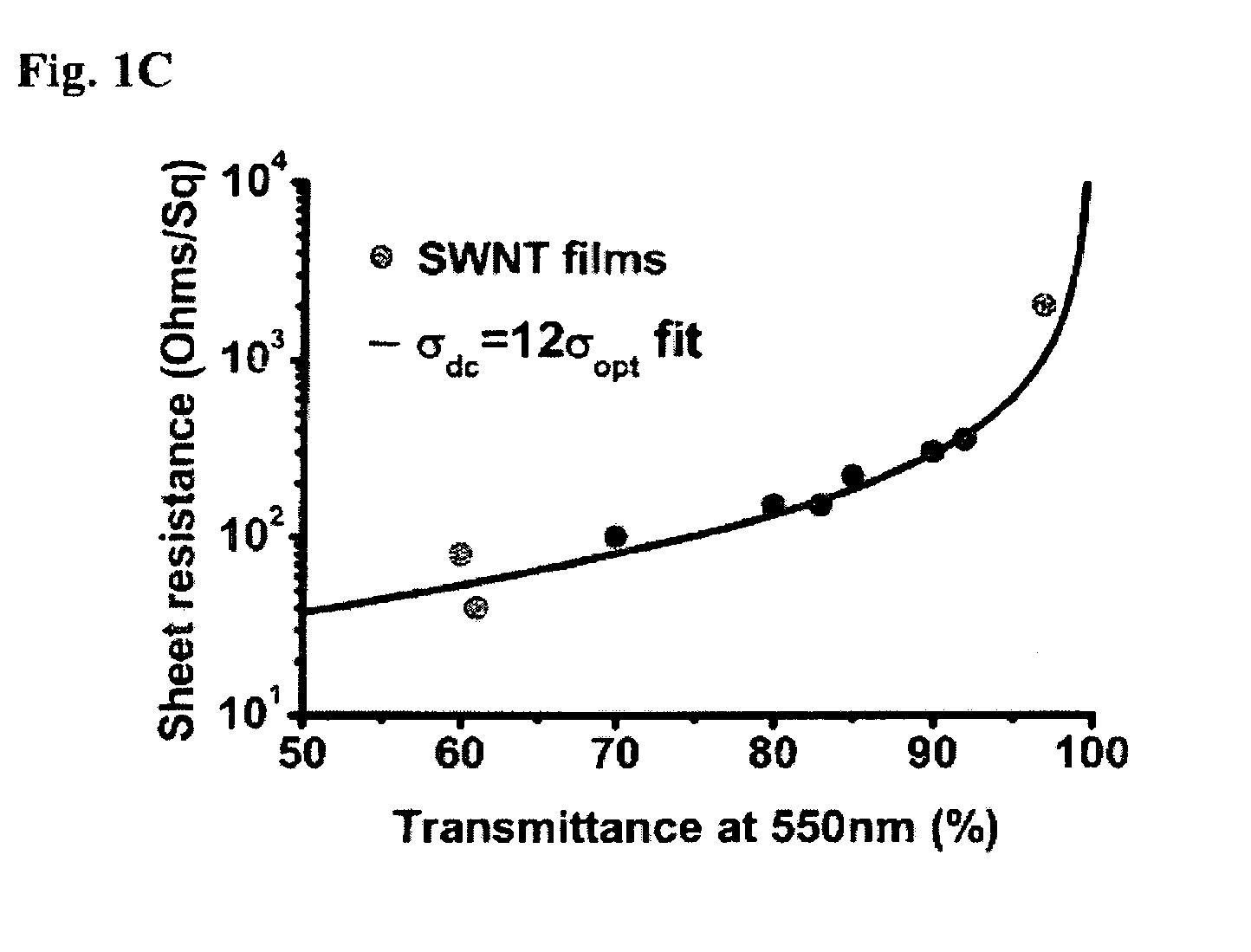Organic light-emitting diodes with nanostructure film electrode(s)
a light-emitting diode and nano-structure film technology, applied in the manufacture of electrode systems, electric discharge tubes/lamps, discharge tubes luminescnet screens, etc., can solve the problems of high cost, high cost, and high cost of ito, and achieves relatively low work function and corrosion resistance. , the effect of reducing the number of defects
- Summary
- Abstract
- Description
- Claims
- Application Information
AI Technical Summary
Benefits of technology
Problems solved by technology
Method used
Image
Examples
Embodiment Construction
[0028] Referring to FIG. 1A, a nanostructure-film according an embodiment of the present invention comprises a two-dimensional random network of nanostructures. This film is preferably at least semi-transparent and electrically conductive, and preferably comprises at least one network of single-walled carbon nanotubes (SWNTs).
[0029] Transparent conducting nanostructure-films composed of randomly distributed SWNTs (i.e., networks) have been demonstrated as substantially more mechanically robust than ITO. Additionally, theoretical and experimental studies have established that the work function of SWNT networks can be in the range of 4.7-5.2 eV—sufficiently high to meet at least the anode requirements for such optoelectronic devices as OLEDs. Moreover, SWNTs can be deposited using a variety of low-impact methods (e.g., it can be solution processed), and comprise carbon, which is one of the most abundant elements on Earth.
[0030] SWNT networks may be fabricated by, for example, suspen...
PUM
 Login to View More
Login to View More Abstract
Description
Claims
Application Information
 Login to View More
Login to View More - R&D
- Intellectual Property
- Life Sciences
- Materials
- Tech Scout
- Unparalleled Data Quality
- Higher Quality Content
- 60% Fewer Hallucinations
Browse by: Latest US Patents, China's latest patents, Technical Efficacy Thesaurus, Application Domain, Technology Topic, Popular Technical Reports.
© 2025 PatSnap. All rights reserved.Legal|Privacy policy|Modern Slavery Act Transparency Statement|Sitemap|About US| Contact US: help@patsnap.com



